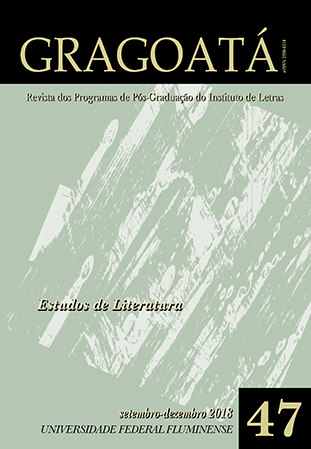Narratives of absence and power: the representation artifice in Saramago’s thesis novel
DOI:
https://doi.org/10.22409/gragoata.v23i47.33602Keywords:
Saramago, late capitalism, sociability, urbanism, post-politics.Abstract
In “roman à these” A caverna, Saramago produces an representation artifice that permits to elucidate forms of dominance, whose analysis derives from the criticism of the functioning of the principle of the market that limits the State and delegitimizes forms of sociability already proposed, whether by its liberal phase or by the organized phase of late capitalism. At the same time, it reveals other sociabilities subordinated by modernity. It is emphasized how ethnical and political discourses fulfill the communicative conditions for a hermeneutic self-comprehension of collectivity, since they enable an authentic self- comprehension and lead to the criticism of a project of identity, in which it is necessary the fulfillment of certain conditions of a systematically non-deformed communication.
---
Downloads
Downloads
Published
How to Cite
Issue
Section
License
Authors who publish in Gragoatá agree to the following terms:
The authors retain the rights and give the journal the right to the first publication, simultaneously subject to a Creative Commons license CC-BY-NC 4.0, which allows sharing by third parties with due mention to the author and the first publication by Gragoatá.
Authors may enter into additional and separate contractual arrangements for the non-exclusive distribution of the published version of the work (for example, posting it in an institutional repository or publishing it in a book), with recognition of its initial publication in Gragoatá.

Gragoatá is licensed under a Creative Commons - Attribution-NonCommercial 4.0 International.











